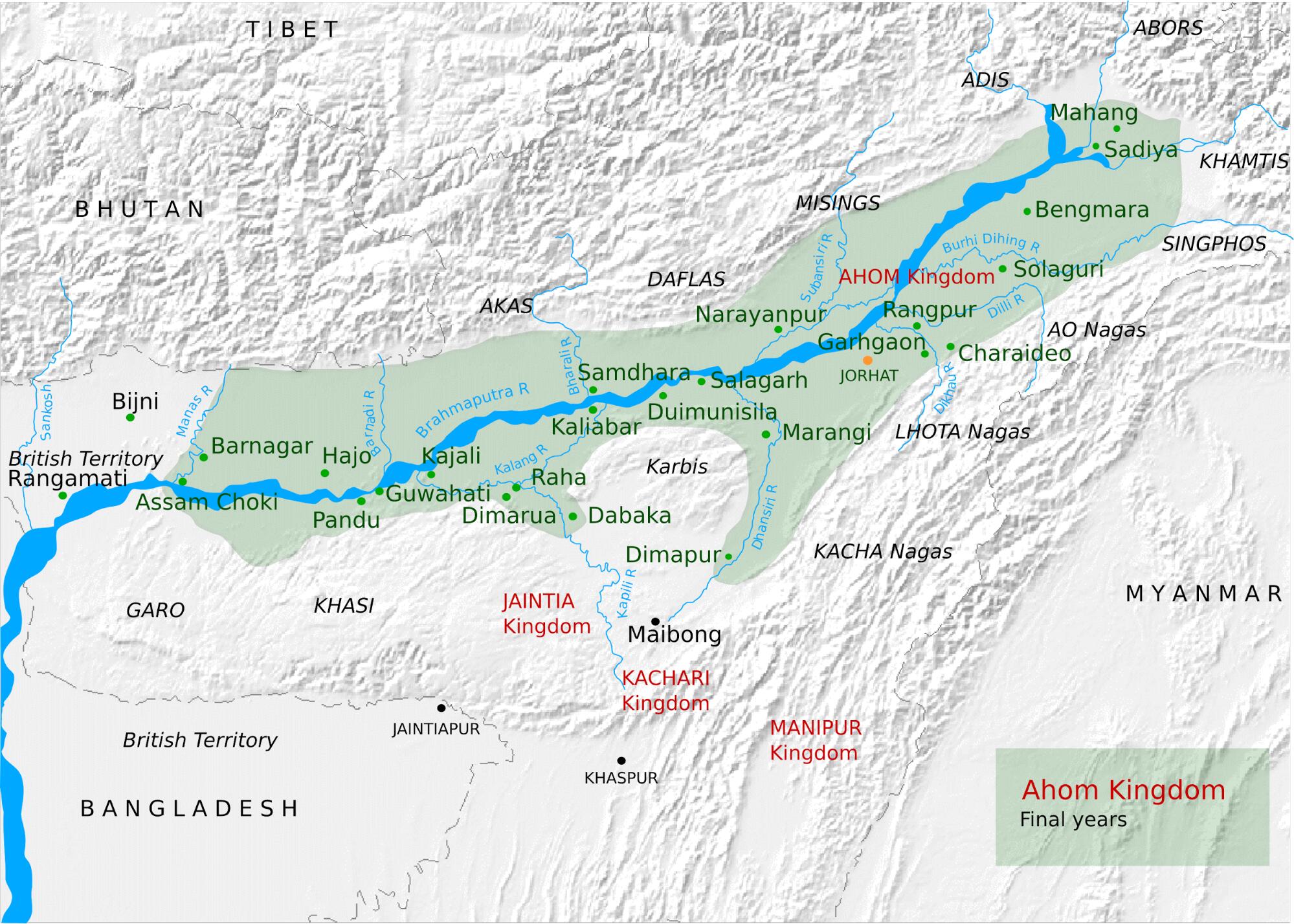General Lachit Borphukan of Ahom Kingdom | 22 Mar 2021
Why in News
Recently, the Prime Minister called 17th century Ahom general Lachit Borphukan a symbol of India’s “Atma Nirbhar military might”.
Key Points
- Lachit Borphukan:
- Born on 24th November, 1622, Borphukan was known for his leadership in the Battle of Saraighat, 1671 in which an attempt by Mughal forces to capture Assam was thwarted.
- He was the inspiration behind strengthening India’s naval force and revitalising inland water transport and creating infrastructure associated with it due to his great naval strategies.
- The Lachit Borphukan gold medal is awarded to the best cadet from the National Defence Academy.
- The medal was instituted in 1999 to inspire defence personnel to emulate Borphukan’s heroism and sacrifices.
- He died on 25th April, 1672.
- Ahom Kingdom:
- Founder:
- Chaolung Sukapha was a 13th century ruler who founded the Ahom kingdom that ruled Assam for six centuries. The Ahoms ruled the land till the province was annexed to British India in 1826 with the signing of the Treaty of Yandaboo.
- Political Setup:
- Ahoms created a new state by suppressing the older political system of the bhuiyans (landlords).
- The Ahom state depended upon forced labour. Those forced to work for the state were called paiks.
- Society:
- Ahom society was divided into clans or khels. A khel often controlled several villages.
- Ahoms worshipped their own tribal gods, yet they accepted the Hindu religion and the Assamese language.
- However, the Ahom kings did not completely give up their traditional beliefs after adopting Hinduism.
- Intermarriage with local also increased assimilation processes of Ahoms in Assamese culture.
- Art and Culture:
- Poets and scholars were given land grants and theatre was encouraged.
- Important works of Sanskrit were translated into the local language.
- Historical works, known as buranjis, were also written, first in the Ahom language and then in Assamese.
- Military Strategy:
- The Ahom king was the supreme commander of the state as well as the Military. The Ahom king himself led the state forces in the time of wars. The Paiks were the main army of the state.
- There were two types of Paiks i.e. serving and nonserving. The non-serving Paiks constituted a standing militia which could be mobilized at a short notice by the kheldar (an expert military organizer).
- The full contingent of the Ahom Army consisted of infantry, navy, artillery, elephantry, cavalry and spies. The main war weapons consisted of bows and arrows, swords, Javelins discus, guns, match-locks and cannons.
- The Ahoms sent spies to the enemy’s camp to study the strength and the war strategies of the enemies before leading an expedition.
- The Ahom soldiers were experts in guerilla fighting. Sometimes they allowed the enemies to enter the country, then cut off their communications and attack them in front and rear
- Few important forts: Chamdhara, Saraighat, Simlagarh, Kaliabar, Kajali and Pandu.
- They also learnt the technique of constructing boatbridges in the Brahmaputra.
- Above all, the mutual understanding among the civil and military wings, unity among the nobles always worked as strong weapons of the Ahoms.
- The Ahom king was the supreme commander of the state as well as the Military. The Ahom king himself led the state forces in the time of wars. The Paiks were the main army of the state.
- Founder:
Battle of Saraighat
- The battle of Saraighat was fought on the banks of the Brahmaputra in Guwahati in 1671.
- It is considered as one of the greatest naval battles on a river which resulted in the victory of Ahoms over the Mughals.

